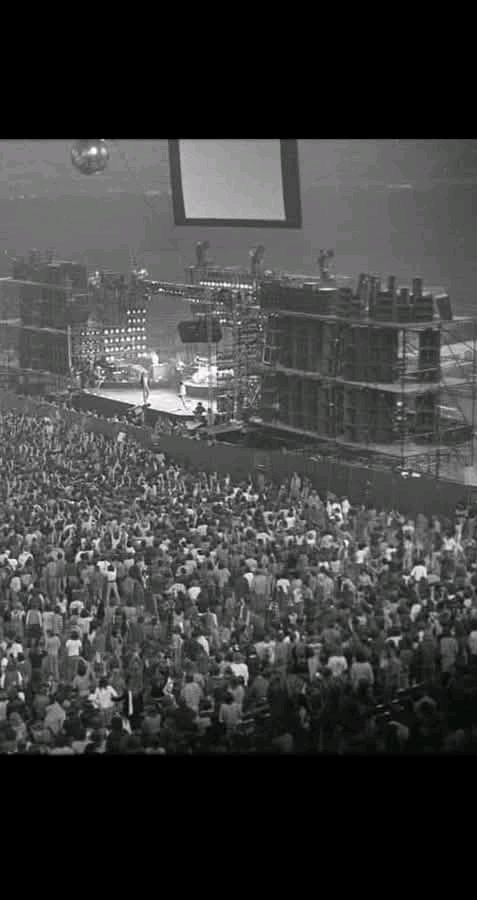Led Zeppelin were known for their explosive live shows, with massive stacks of Marshall amplifiers. They created an ear-splitting onslaught of sound that left a lasting impact. Led Zeppelin were well-known for playing extended versions of their songs…
From the band’s formation in 1968, Led Zeppelin quickly established themselves as a force to be reckoned with on stage. Their live shows were characterized by improvisation, extended instrumental passages, and a dynamic energy that could scarcely be replicated in the studio. Unlike many of their contemporaries who relied on polished, tightly arranged performances, Led Zeppelin thrived on spontaneity and raw power, often pushing their equipment and themselves to the limit.
One of the defining features of their live sound was the use of massive amplifier stacks. Led Zeppelin famously employed large arrays of Marshall amplifiers—sometimes stacking multiple heads and cabinets—to produce a volume and tone that became their signature. The sheer scale of their amplification setup created a wall of sound that was both physically and emotionally overwhelming. Audience members often reported experiencing a visceral assault of bass, guitar, and drums that seemed to shake the very ground beneath their feet.
Jimmy Page, the band’s legendary guitarist, was known for his innovative use of amplification, often customizing his gear to achieve a thick, powerful tone. His guitar solos, when amplified through the towering stacks, became a seismic force, capable of filling large arenas and stadiums. John Bonham’s thunderous drumming, combined with the amplified power of the guitars and bass, created a relentless rhythm section that drove the band’s extended jams and improvisations.
Led Zeppelin’s penchant for playing extended versions of their songs was a hallmark of their live performances. Songs like “Dazed and Confused,” “Moby Dick,” and “Whole Lotta Love” often featured lengthy improvisational sections, solos, and interactions with the audience. These extended jams allowed each member to showcase their virtuosity and contributed to the overall intensity of the show. For example, “Dazed and Confused” could stretch well beyond its studio length, incorporating experimental feedback, intricate guitar work, and spontaneous musical dialogues.
Similarly, “Moby Dick” became famous for Bonham’s drum solo, which often lasted over 20 minutes in concert. During these solos, Bonham’s explosive drumming—marked by rapid-fire fills and powerful bass drum work—was amplified through multiple speakers, creating a sonic explosion that seemed to shake the entire venue. These performances exemplified how Led Zeppelin used their amplification and improvisation to craft immersive, almost hypnotic live experiences.
The band’s approach to extended performances was partly driven by their desire to connect with their audience on a visceral level. They sought to create a communal experience where the boundary between performer and listener blurred, and where the music’s power could be fully felt. The extended improvisations and raw amplification contributed to this sense of shared energy and spontaneity.
The scale of their live sound was also a reflection of their ambition. By employing massive amplifier stacks and pushing their gear to its limits, Led Zeppelin aimed to create a sound that was larger-than-life. Their goal was to fill stadiums and arenas with a sound so powerful that it could not be contained. This approach helped establish their reputation as one of the loudest bands of their era, a status they often embraced with pride.
Furthermore, their live performances influenced countless bands and musicians who followed. The emphasis on volume, improvisation, and extended jams became a hallmark of hard rock and heavy metal. Led Zeppelin’s fearless approach to live amplification and extended improvisations set a new standard for rock concert experiences, making their shows legendary and often studied by musicians seeking to emulate their sound and energy.
In summary, Led Zeppelin’s explosive live shows, characterized by their massive stacks of Marshall amplifiers and their penchant for extended versions of their songs, left an indelible mark on the history of rock music. Their ability to generate a thunderous, immersive sound that pushed the boundaries of volume and improvisation defined their legendary status. These performances not only showcased their musical virtuosity but also exemplified their commitment to creating powerful, unforgettable live experiences that continue to influence musicians and audiences to this day.
